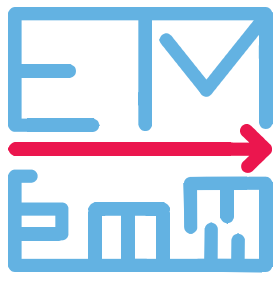Denials/Reductions for Insufficient E/M Documentation Continue

We recently warned providers about an emerging trend among California workers’ comp claims administrators: denying payment for Evaluation and Management (E/M) services in the absence of extensive reports. Claims administrators often downcode such E/M services, but outright denials are increasingly common — and upheld by Independent Bill Review (IBR).
Gallagher Bassett is one claims administrator consistently supplying examples of this “zero tolerance” policy. Providers billing Gallagher Bassett, take heed.
Gallagher Bassett Denials
As the Gallagher Bassett Explanations of Review (EORs) below show, the third-party administrator (TPA) will take any omission or lack of detail in provider reports as an opportunity to reduce reimbursement. Note the Bill Adjustment Reason, circled in red:
“The documentation does not support the level of service billed. Reimbursement was made for a code that is supported by the description and document.”
As severe as this downcoding is, recent IBR cases make it clear that Gallagher Bassett is within its rights to go even further. The claims administrator may completely deny charges for E/M services if the documentation isn’t up to snuff, as in the Gallagher Bassett EORs below, which state:
“CLAIM/SERVICE LACKS INFORMATION OR HAS SUBMISSION/BILLING ERROR(S) WHICH IS NEEDED FOR ADJUDICATION.”
Fortunately, all was not lost for this provider. By appealing with a second review, the provider created an opportunity to further substantiate the charges with sufficiently detailed reporting, and obtained full reimbursement. Note the final EOR from Gallagher Bassett:
“ADDITIONAL ALLOWANCE RECOMMENDED. THIS BILL AND SUBMITTED DOCUMENTATION HAVE BEN [sic] REEVALUATED BY CLINICAL VALIDATION.
Billing for E/M Services
The first challenge in accurately billing for E/M services is identifying the level of service rendered. The Center for Medicare and Medicaid Services (CMS) Documentation Guidelines for Evaluation and Management Services outlines the complex method for determining the appropriate service level and therefore, the correct billing code.
For a detailed explanation of the process, see our guide to E/M services billing, and download our E/M services checklist. In short, the process breaks down to an accurate assessment of seven components involved in the service:
- History
- Examination
- Medical Decision Making
- Counseling
- Coordination of Care
- Nature of Presenting Problem
- Time
Each of the seven components features its own individual component level of service, which together determines the overall level of E/M service. But whatever the level of service, the claims administrator will likely deny the charge without extremely thorough documentation supporting the level billed.
To paraphrase an old saying, the denial’s in the details. However burdensome it is, providers must dot every ‘i’ and cross every ‘t,’ as we described in our original post on the topic.
The moral of the story? While claims administrator compliance can vary, one thing is sure: claims administrators are enforcing meticulous standards of E/M documentation. As it stands, providers’ only option is to master the rules, and support every charge with ironclad reporting.
Workers’ comp is a pain, but daisyBill makes it better. Our Billing Software lifts billing burdens, generating compliant RFAs, bills, and appeals. Schedule a free demonstration, and see how much better work comp can be.
REQUEST DEMO
DaisyBill provides content as an insightful service to its readers and clients. It does not offer legal advice and cannot guarantee the accuracy or suitability of its content for a particular purpose.
%20rounded.png)



